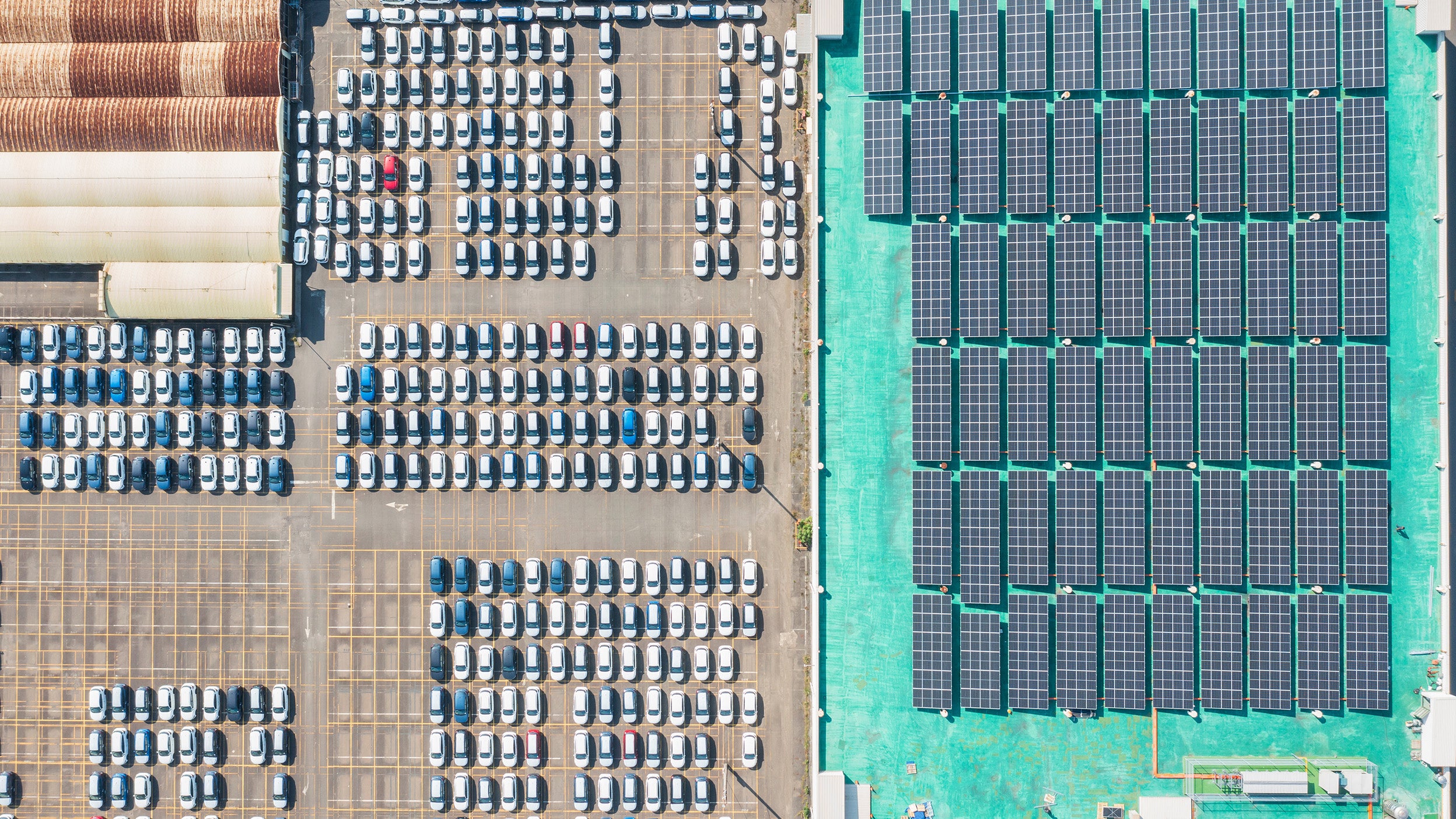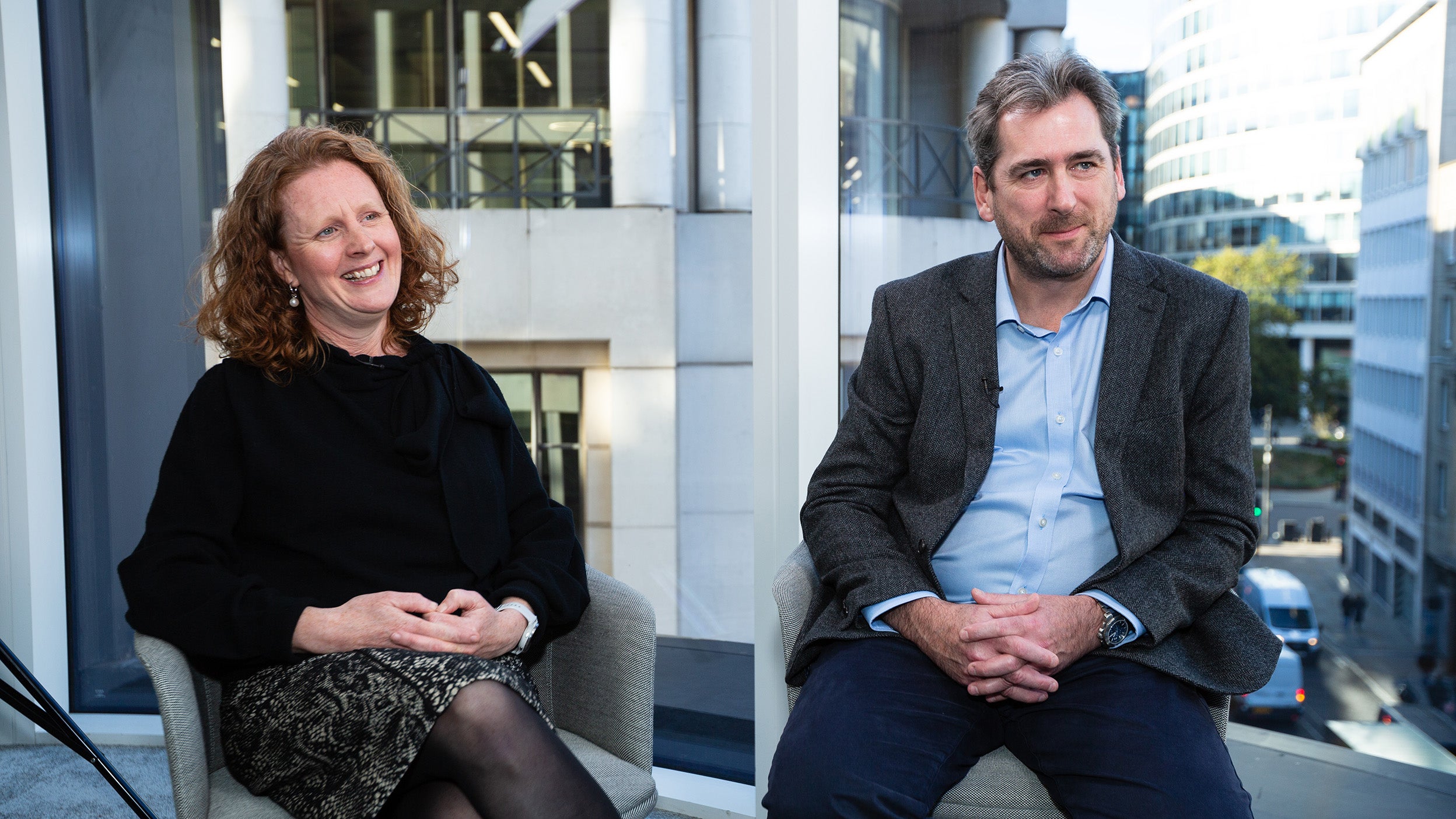
ETF Three compelling reasons to consider S&P 500 Equal Weight
Discover market conditions that could make an equal-weight approach worth considering for gaining a more balanced exposure to large-cap US equity benchmarks.

In our recent webinar, Unpacking Equity Market Trends in 2025, held on 1st July, Ben Gutteridge, Director of Model Portfolios, hosted a discussion with Oliver Collin, Co-Head of UK and European Equities; Andy Hall, Global Equities Fund Manager; and James McDermottroe, Asia ex-Japan Equities Fund Manager. Together, they explored the key macroeconomic themes influencing markets this year, along with sector-specific developments and standout stock opportunities.
To set the scene, Ben provided an overview of global equity performance year-to-date, highlighting recent US market weakness before transitioning into a Q&A session. Here are the key takeaways to help you engage with clients on current market trends and equity developments.
Andrew: We generally avoid taking a strong top-down view to guide our investment decisions, preferring instead to focus on individual stock fundamentals. That said, recent months have brought significant developments - tariffs, the DeepSeek news triggering a sharp sell-off in major U.S. tech names like NVIDIA, heightened geopolitical tensions, and dollar weakness.
Despite these headwinds, the U.S. market has historically shown resilience. The US holds structural advantages for business growth. A large domestic consumer base, a culture of entrepreneurship, and strong venture capital support. Many of the companies we invest in, such as Microsoft, Apple, and Google, are global in nature, generating revenue across diverse markets. While we’re cautious about making forecasts, our exposure to Europe remains in line with the benchmark.
While the impact of macro events varies at the stock level, our approach remains consistent: take a long-term view (3–5 years) while using short-term volatility as an opportunity to optimise for near-term gains. We focus on identifying industries with long-term growth potential, particularly in fragmented US sectors where strong leadership can drive meaningful expansion.
Oliver: Markets are responding to what’s directly ahead, and one of the most significant shifts in Europe is Germany’s move to ease its long-standing debt brake. Given that Germany represents around a third of european GDP, this increase in public investment could act as a catalyst for broader regional growth. Another key development is the rise in defence spending across Europe, which we believe will support a region that remains underinvested, under-owned, and attractively valued.
We’re also seeing notable sector divergence. Domestic-facing European stocks that are less exposed to global trade tensions and tariffs, such as banks, utilities, and telecoms are leading the market, compared to sectors like consumer discretionary.
James: When considering the potential impact on Chinese companies we invest in, it’s important to note that exports make up around 15% of China’s GDP, with exports to the U.S. accounting for less than 3%. Moreover, approximately 80% of earnings in the Chinese investable universe are domestically driven, making internal factors far more influential on market performance.
Stability in the property sector and a recovery in consumer confidence are therefore critical. Positive developments in these areas would likely support equity valuations across the broader region. The most meaningful policy shift came during last year’s Golden Week, when the Chinese Communist Party government moved to stabilise the property market which is supportive of consumer confidence and therefore the equity markets. To us, as investors, it showed that the government do have some sensitivity to market weakness, and we saw a very sharp rally from very overly discounted levels.
We believe China is nearing the end of its property market adjustment, with potential for an organic, cyclical recovery supported by policies that remain easier and more supportive in the years ahead. Additionally, the reconfiguration of global supply chains, evident in the growing roles of countries like Indonesia and Vietnam, presents further opportunities, despite these regions also facing tariff-related challenges.
Andrew: Recent market volatility has created opportunities for us, as active fund managers, to invest in high-quality businesses that were previously out of reach due to valuation, or to reintroduce names we had trimmed because they had become too expensive. This environment has allowed us to reposition the portfolio with a view to long-term growth, though we acknowledge that remains to be seen as markets are still highly volatile. In Q4 we began already reducing some risk exposure, choosing not to chase momentum and instead focusing on maintaining a balanced, resilient portfolio.
James: The market environment has remained volatile. We have taken a selective approach to trading, we remain valuation-driven, with confidence rooted in company fundamentals. Our portfolios are constructed to avoid overexposure to any single company, sector, or theme, ensuring resilience amid shifting policy landscapes.
Oliver: If your investment thesis for Europe is based on the region benefiting from cheap Chinese imports, we’d argue that’s not a sustainable proposition. The real opportunity in Europe lies in its domestic story, strong employment, job creation, fiscal easing, high savings rates, and pent-up demand for housing and household formation factors we haven’t seen align in over a decade.
While cheaper Chinese goods may offer a short-term boost for consumers, they could also pressure domestic producers. However, the broader European investment case is rooted in internal momentum, not external deflationary tailwinds.
James: Emerging markets often benefit from a weaker dollar environment, but we believe there are even stronger structural stories at play. Countries like India and Indonesia are experiencing robust domestic growth, and China appears to be nearing the bottom of its economic cycle, offering potential upside.
Rather than making macro calls or currency bets, our focus remains on building a well-balanced, diversified portfolio that can navigate a range of outcomes.
Andrew: We maintain broad exposure to the AI theme. One thing we are keeping an eye on is AI chatbots making their way into corporations and trying to figure out which businesses stand to benefit from improvements in efficiency and productivity, and which businesses may get left behind in the dust.
Major platforms like Google and Meta have integrated AI, and the rise of AI agents from leading software vendors is driving productivity gains. This has boosted market confidence in the long-term value of AI investment. While we acknowledge the risk of short-term pullbacks, we believe we’re still early in the trend. We manage this through ongoing portfolio optimisation. Notably, Google’s dominance in search may be challenged as AI enables more diverse consumer pathways to products.
There is already a noticeable shift as AI becomes increasingly embedded in everyday working practices. Rather than anticipating a surge of entirely new, revolutionary technology firms, the more compelling opportunity lies in how existing businesses integrate AI into their operating models.
James: Asia remains central to the AI revolution, particularly as the region is home to many of the world’s leading-edge chip manufacturers, most notably in Korea and Taiwan. These "picks and shovels" of AI infrastructure are foundational to the broader technological shift.
Following the launch of ChatGPT and the surge in demand for NVIDIA’s GPU chips, we saw the valuations of Asian tech companies linked to the NVIDIA supply chain soar, often beyond levels we were comfortable with. While there are still compelling opportunities in hardware, we also see potential in IT services and consulting firms that will benefit as AI infrastructure matures.
That said, uncertainty remains, partly due to geopolitical factors like Liberation Day, but also due to broader questions around AI’s ultimate role in driving productivity. For now, valuation discipline remains key as we navigate this evolving landscape.
Oliver: We believe we’re still in the early stages of AI implementation across businesses, the foothills of what could be a transformative journey. The real promise of AI lies in its potential to drive productivity gains, particularly in regions facing demographic headwinds.
In markets where labour can be costly to businesses and difficult to adjust, such as Europe, digital solutions can help offset the challenges of an ageing workforce by supporting a retiring labour force with more efficient technologies. This could position Europe to benefit meaningfully from AI adoption, especially given its historically low trend growth over the past decade.
Oliver: One of the most compelling themes in Europe right now is electrification. We see strong potential in the foundational enablers of this transition, particularly cable manufacturers, which are essential to building out the physical infrastructure. These companies, once viewed as highly cyclical, are now benefiting from long-term investment trends that give them more structural growth characteristics.
Utilities are also playing a key role, not just in implementation but in driving performance, supported by a clear, long-term trajectory to upgrade energy systems. In a world full of uncertainty, this theme stands out for its durability and the attractive valuations still available in parts of the value chain.
Andrew: We believe several long-term structural trends remain central to successful investing. One such theme is value for money. As consumers face tighter financial conditions following the pandemic, businesses that offer affordability without compromising quality are well positioned for growth. Companies focused on cost efficiency and competitive pricing are likely to continue attracting loyal customers and delivering steady returns.
We also see significant opportunities in the global ageing demographic. This shift is reshaping consumer behaviour and creating demand for products and services tailored to older populations. One of our holdings, Hoya, a Japanese lens manufacturer, stands out as a beneficiary of the growing demand for vision correction in ageing societies. These businesses address both the practical and lifestyle needs of ageing consumers, offering resilient, long-term investment potential.
James: We are overweight Korea and Brazil where we see compelling opportunities. In Korea, corporate governance reforms are encouraging improved corporate performance and shareholder returns. In our view, Korean equities are often undervalued, many trading below value, with underappreciated opportunities for growth to surprise positively. Our portfolio is overweight in Korea to capture this potential.
We see value in Brazil, despite recent underperformance due to high interest rates, we expect a recovery as monetary policy eases and earnings growth resumes. Our overweight position reflects confidence in the market’s rebound potential.
We also maintain strong exposure to materials such as iron ore and copper. While markets are often very reactive to demand shifts, we believe supply side constraints, especially in concentrated markets, are underappreciated and can drive significant price movements. This creates a favourable environment for long-term investment in commodities.
You can listen to the full recording to below (registration required).
We manage both active and passive capabilities that span regions and styles. With decades of experience, we offer a diverse range of strategies to meet your financial goals.

Discover market conditions that could make an equal-weight approach worth considering for gaining a more balanced exposure to large-cap US equity benchmarks.

Unlike market-cap indices, which naturally concentrate exposure in the largest companies, Equal Weight strategies assign the same weight to each constituent. Invesco’s Equal Weight UCITS ETFs offer access to this approach across both global, US and European markets.

Experts from equities, fixed income, real estate, alternatives, and more discuss where they see opportunities and risks in 2026.